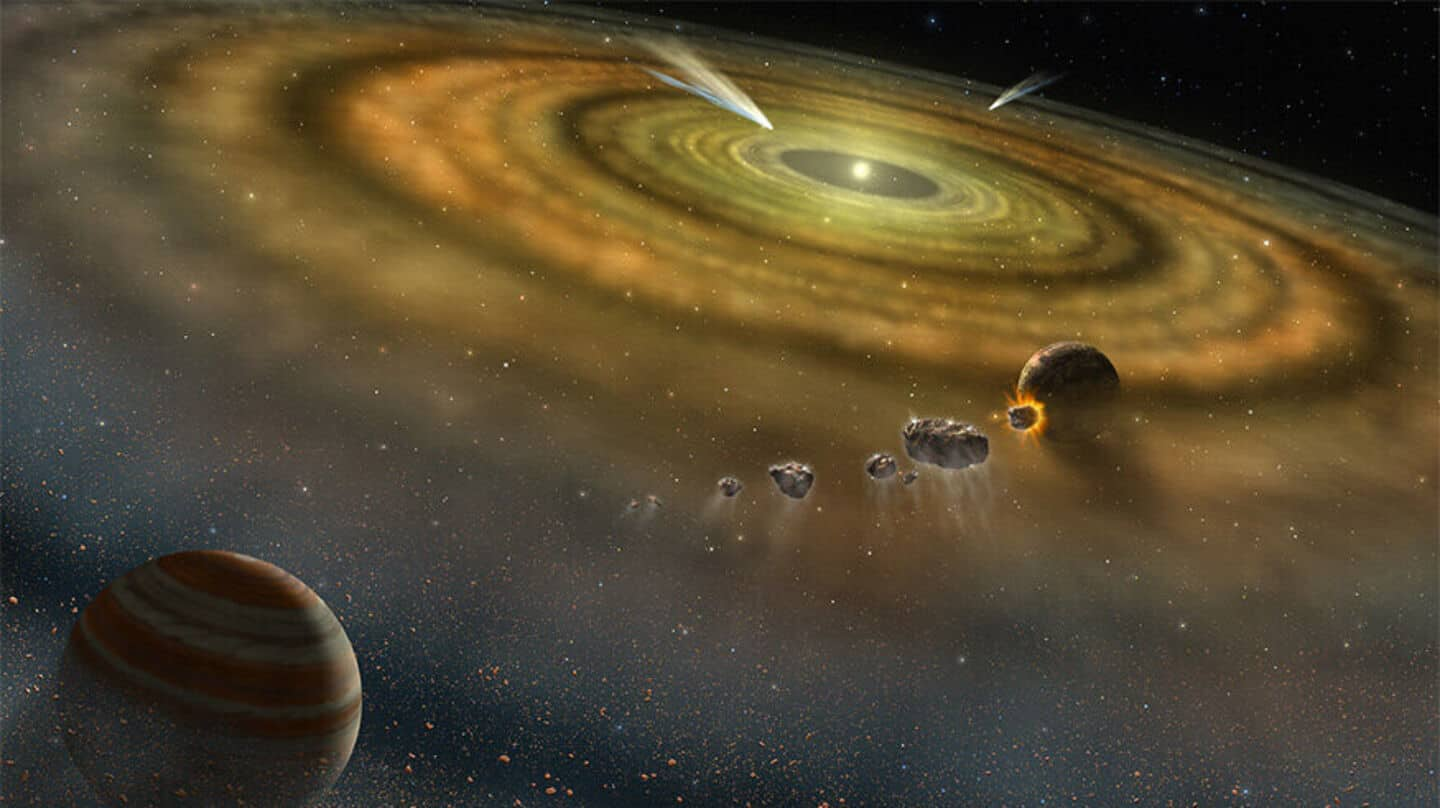
We might be wrong about how our solar system formed
What's the story
A small meteorite, Northwest Africa 12264, is challenging the long-held belief about the formation of planets in our solar system. The research was conducted by Dr. Ben Rider-Stokes from The Open University in Milton Keynes, UK. It was published in Communications Earth & Environment and suggests that rocky planets both inside and outside the asteroid belt formed at the same time.
Formation process
Traditional view of planet formation
According to the traditional view, planets get formed when a swirling disk of gas around a young star begins to clump together. This process, known as accretion, is followed by heating and differentiation that creates distinct planetary layers like core, mantle, and crust. It was believed that such processes began at different times in the early solar system—around 4.566 billion years ago for inner protoplanets, and 4.563 billion years ago for outer ones.
Age revelation
A look at the meteorite
The 50g meteorite, bought from a dealer in Morocco in 2018, has challenged the traditional timeline. Researchers determined its age to be some 4.564 billion years by measuring its lead isotopes. This is similar to inner solar system basalts found in planetary crusts, and suggests that rocky planets beyond Jupiter may have formed just as quickly as those within it.
Results
Implications of the research
The researchers said, "Our findings are consistent with observations of exoprotoplanetary disks that imply rapid planetesimal formation across radial distances." This means that the new findings could have far-reaching implications for our understanding of planet formation in the early solar system. The research also gives us a better understanding of what happened in our cosmic backyard, which can be applied to other solar systems and their planets.